コラム
落合憲弘
John Sypal
タカザワケンジ
なぎら健壱

Between February and May of 1998, The Tokyo Metropolitan Government’s Public Health Bureau conducted its first-ever survey of the city’s cat population. The results shared later that year estimated that the capitol’s homes and alleyways were home to 1.2 million felines.
The indoor cat population- some 600,000- was extrapolated from a survey of 3,000 human households. A head-count of outdoor and stray cats proved more intensive. The government hired a survey company to tally the number of cats seen within 5 meters of several five- and ten-kilometer preplanned routes in the prefecture. Each route was surveyed three times on the same day—once in the morning, again in the early afternoon, with one last pass that evening. While the margin of error was not given, the work of these eagle-eyed cat-spotters allowed the authorities to proclaim that there were 560,000 cared for (collared?) cats- with another 110,000 strays. Obviously, accurate differentiation between outdoor and stray cats would be, quite literally, fuzzy.
Several years prior, photographer Nobuyoshi Araki was compiling his own sort of, well, “cat-a-log” of the city’s backstreet felines for a monthly feature in the magazine Anima. In 1993 (the same year that the magazine closed), a 154 page softcover compilation was published by Heibonsha: Tokyo Nekomachi 東京猫町.
Given the English title “Living Cats in Tokyo”, this book is a delightful, monochromatic saunter punctuated by feline encounters throughout Tokyo’s countless alleyways. One would be forgiven in thinking there was a cat or two around every corner in the early 1990’s- Araki’s photographic evidence is fairly convincing! While the pages include some close-up cat portraits, to me the most interesting pictures are the ones where, as in real life, there’s joy to be had in discovering a cat peeking out from under an eve or from above an air-conditioning unit.
Here, page-turning becomes a sort of game, with your eyes making their way in and around the nooks and crannies for a feline reward amongst the dense cityscape.
Other pages gently celebrate the coexistence of cats and humans – inter-species friendships expressed with water bowls and hugs- and for some, pest control in local restaurants.
The book also offers up plenty of recent-past Tokyo nostalgia. Most, if not all of the run-down yet obviously-loved wooden houses and sagging, post-war buildings that help comprise the worlds of these alley-cats are gone. If it’s bittersweet to reflect on how much of the old city has inevitably disappeared over the past thirty years, it’s jaw-dropping to see lazy tomcats stretched out on roads in Shibuya- or under a station platform on the tracks of the Shinkansen.

Tokyo Nekomachi is a causal, softcover- in some ways it’s the kind of accessible photobook that people who don’t normally buy photobooks might pick up a whim in a bookshop in the 1990s. This book is neither rare- nor, perhaps due to the fact that the only ones unclothed in it are cats- expensive. It certainly seems to have been popular- my copy is from the fifth print run in April of 2000. (Heibonsha also published another of Araki’s cat books- the popular (and several-times reissued) Chiro, My Love, in 1990.) Designed by Seiichi Suzuki, Tokyo Nekomachi is cleverly divided by camera, with Araki’s medium format work, of (mostly) vertically-oriented photos printed on slicker, white paper, and date-stamped 35mm photos (printed “sideways”) on a tan, rougher paper stock. The effect breaks up the flow- just when you’re getting comfortable with it on your lap the book (just like a cat) has other ideas. It concludes with Araki’s hand-written, personal musings on Tokyo, cats, and the individual pictures and moments in the book.
He sums up his stance on the necessity of cats in Tokyo with his opening line:
- “If cats disappeared, Tokyo would become a ruin.”
While they haven’t completely disappeared, cats on the streets, they are far, far rarer on the streets of Tokyo than they used to be. Out of concern of public (human) health and safety- and of course the welfare of cats themselves- governmental and volunteer initiatives have halved the number of strays (60,000) between 1998 and 2012, according to the most recent survey by the government.
I suspect that a cultural shift has occurred as well. Rather than being content than the traditional, local stray, cats are expensive, treasured (and adorable) family members that are safely kept (and pampered) inside.
Certainly, whether less cats puts Tokyo on the road to ruin or not depends on your point of view- I feel the lack of cat-encoutners makes it less photogenic but I think most will agree that control, such as preventative management (fixing) of stray cats- is good for everyone.
I’m sure that rats especially agree… they’re just not near as nice to discover as a content, purring tabby.
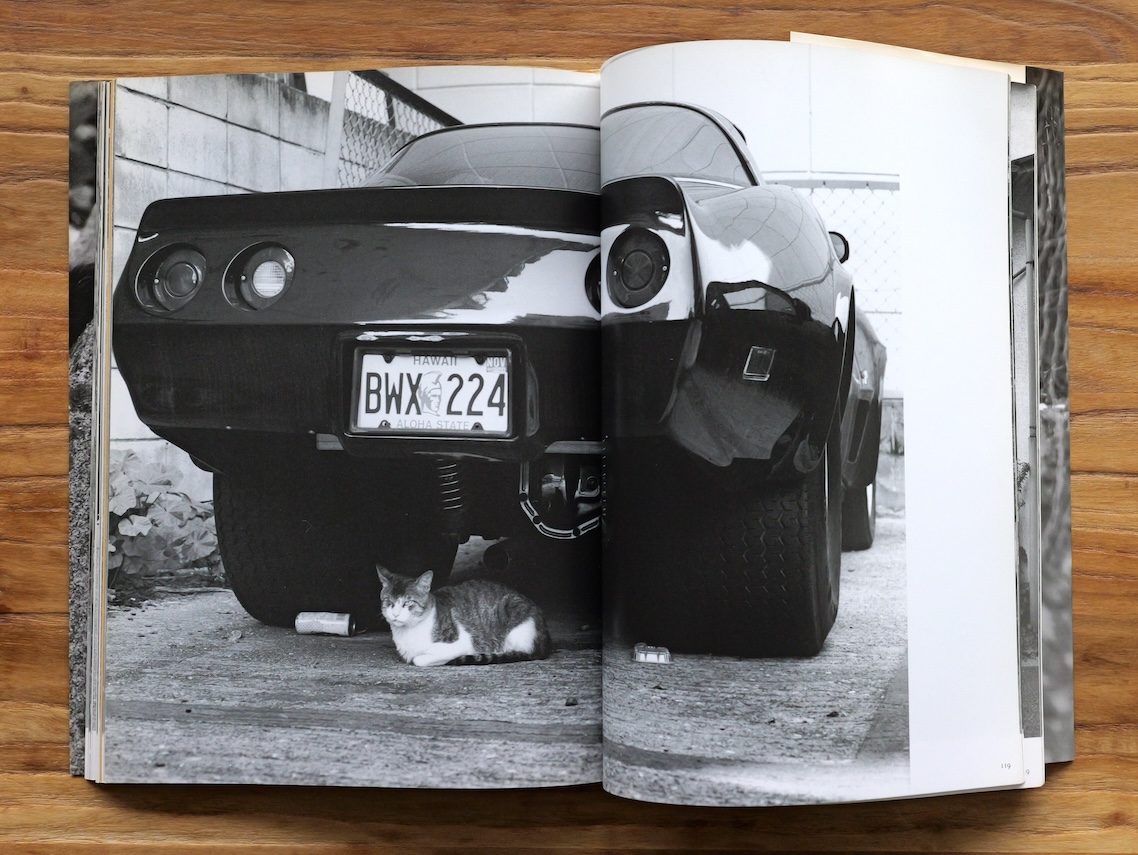
1998年2月から5月にかけて、東京都の衛生局は初めて猫の実態調査を実施しました。その年の後半に公表された結果によると、首都の住宅や路地にはおよそ120万匹の猫が暮らしていると推定されました。室内飼いの猫の数は約60万匹、これは3000世帯の調査から推定されたものです。一方、屋外や野良猫の数を数える作業は、より手間のかかるものでした。都は調査会社に委託し、都内に事前に設定された5kmおよび10kmのルート上で、5メートル以内に目視できた猫の数を数えました。各ルートは1日3回(朝・昼・夕方)調査されました。誤差の範囲は明記されていませんが、この猫の目を持つ調査員たちのおかげで、当局は「飼われている(ニャンだろう?首輪付きで判断したのでしょうか?)猫が56万匹、野良猫が11万匹」と発表しました。
その数年前、写真家の荒木経惟さんは、雑誌『アニマ』の月刊連載で、東京の裏通りに暮らす猫たちを独自に記録していました。1993年(同誌が休刊した年)、平凡社からその記録をまとめたソフトカバー本『東京猫町』が刊行されました。英題は “Living Cats in Tokyo”です。
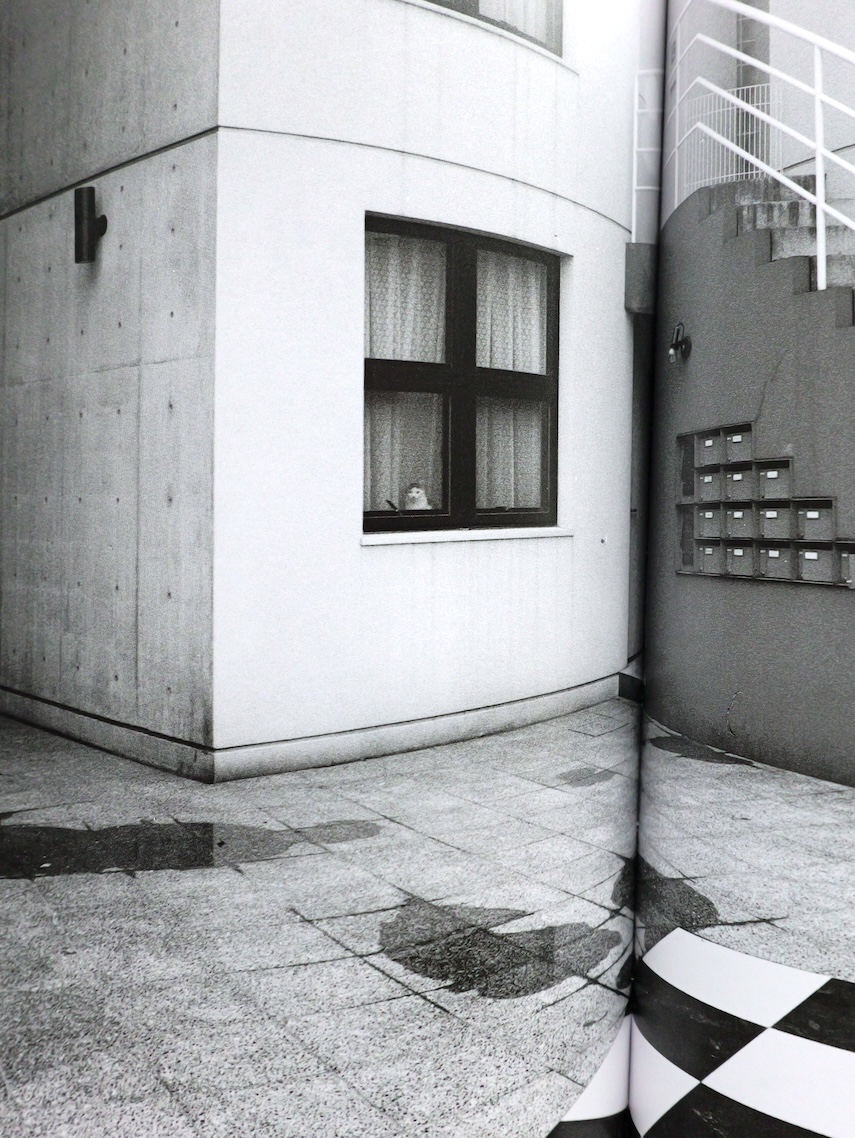
この本は、東京の無数の路地を歩きながら、猫との出会いで彩られたモノクロの散歩記録です。1990年代初頭の東京には、あちこちに猫がいたと思ってしまうのも無理はありません。荒木さんの写真はその存在を強く印象づけます。アップの猫のポートレートもありますが、私にとって魅力的なのは、屋根の下やエアコンの上からひょっこり顔をのぞかせる猫を見つけるような、まるで本物の街角での発見のような写真です。
ページをめくるたび、目は路地裏の隅々を探し、猫を探すゲームのようになります。人と猫の共生を描いたシーン(猫に水を差し出す人や、抱きしめる姿、または飲食店でのネズミ対策としての猫という存在)も描かれています。
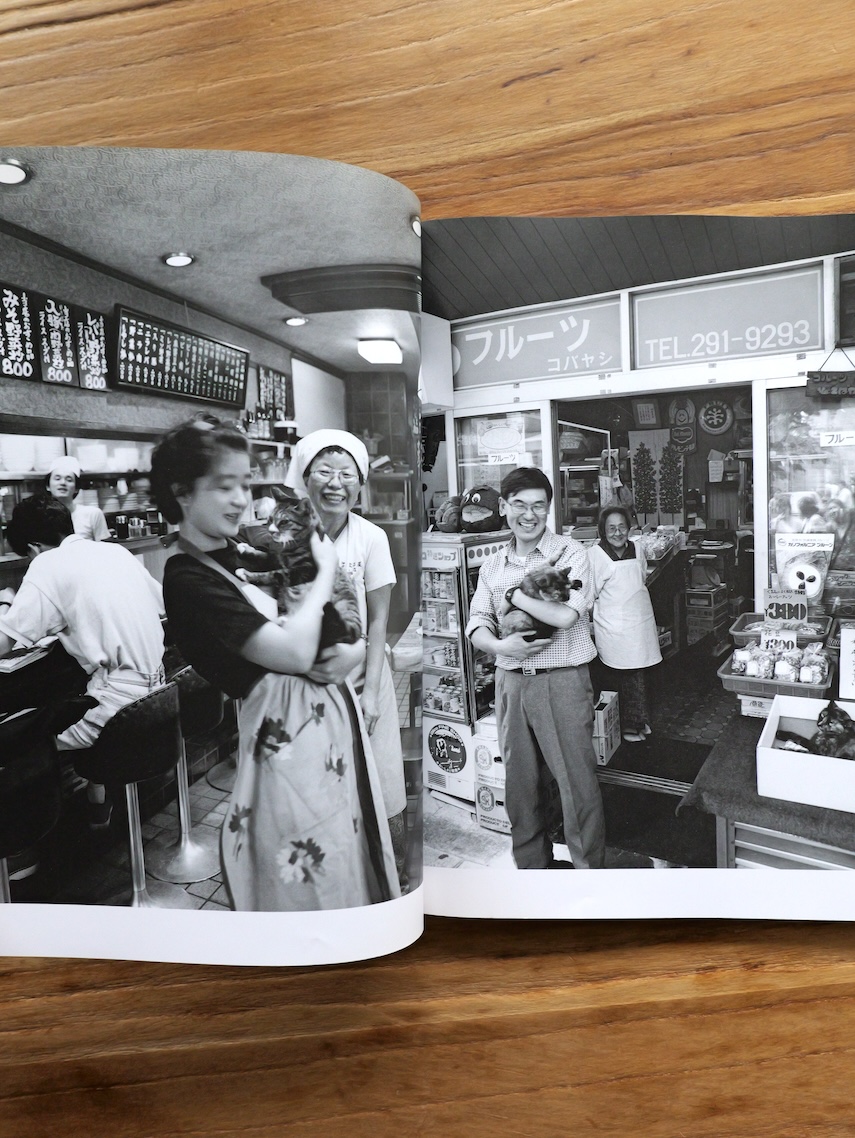
本書は、少し前の東京に対するノスタルジーも満載です。猫たちの舞台である、愛に満ち、古びた木造家屋や戦後の建物の多くは、今や姿を消しました。過去30年で失われた東京の街並みを振り返ると切ないものがあります。特に、渋谷の路上や新幹線のホームで寝そべる野良猫を見ると、驚きさえ覚えます。

『東京猫町』は気軽なソフトカバーの写真集で、普段写真集を買わない人でも本屋でふらっと手に取るような一冊です。レアでも高価でもありません(裸で写っているのは猫だけなので!)。私の手元にあるのは2000年4月の第5刷版。なお、平凡社は荒木のもう一冊の名作猫写真集『愛しのチロ』(1990年)も出版しており、こちらも人気作で何度も再版されています。
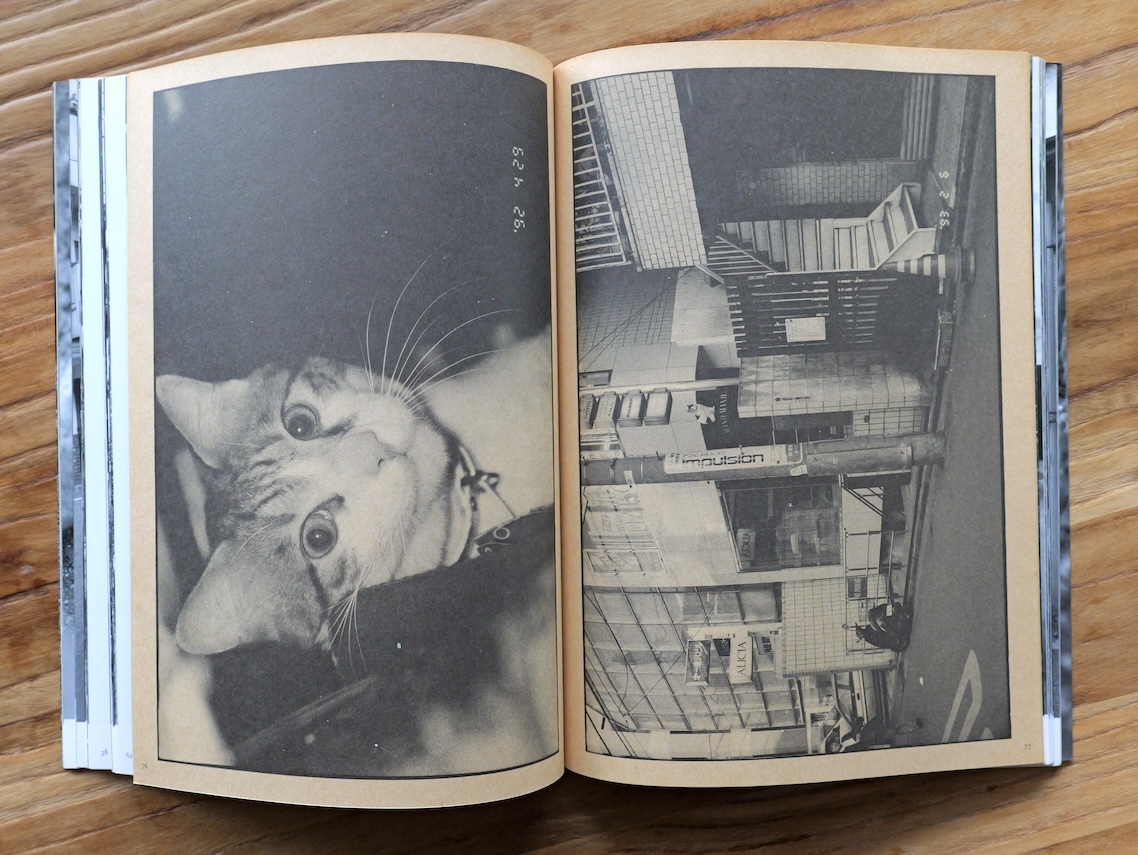
本書は鈴木成一によるデザインで、使用カメラ別に構成されています。荒木さんの中判カメラによる縦構図の写真は白くツヤのある用紙に、日付入りの35mm写真は横構図でザラザラしたベージュ色の用紙に印刷されています。この構成は読書の流れを途切れさせます――ちょうど膝の上で心地よく読み進めていると、本は(まるで猫のように)別の気まぐれを見せるのです。巻末には、荒木さん自身による手書きの東京や猫、写真に対する思いが綴られています。
彼の東京における猫の必要性に対する姿勢は、冒頭の一文に凝縮されています。
- 猫が消えちゃったら東京は廃墟になっちゃうんだろーニャア。

猫が完全にいなくなったわけではありませんが、東京の街中でその姿を見る機会はかなり減りました。人間の健康と安全、そして猫自身の福祉の観点から、1998年から2012年の間に野良猫の数はおよそ半減(6万匹)したと、最新の政府調査は伝えています。
文化的な変化もあると感じます。かつて地域に根付いていた野良猫ではなく、今や猫は高価で愛される(そして可愛い)家族の一員として、大切に室内で飼われていることも関係あるでしょう。猫が減ったことで東京が廃墟に向かうかどうかは人それぞれの視点ですが、私としては、街角で猫に出会う機会が減ったことで、東京の「フォトジェニックさ」が少なくなったように感じます。ただ、野良猫の不妊手術などの予防的な管理は、誰にとっても良いことだと思います。
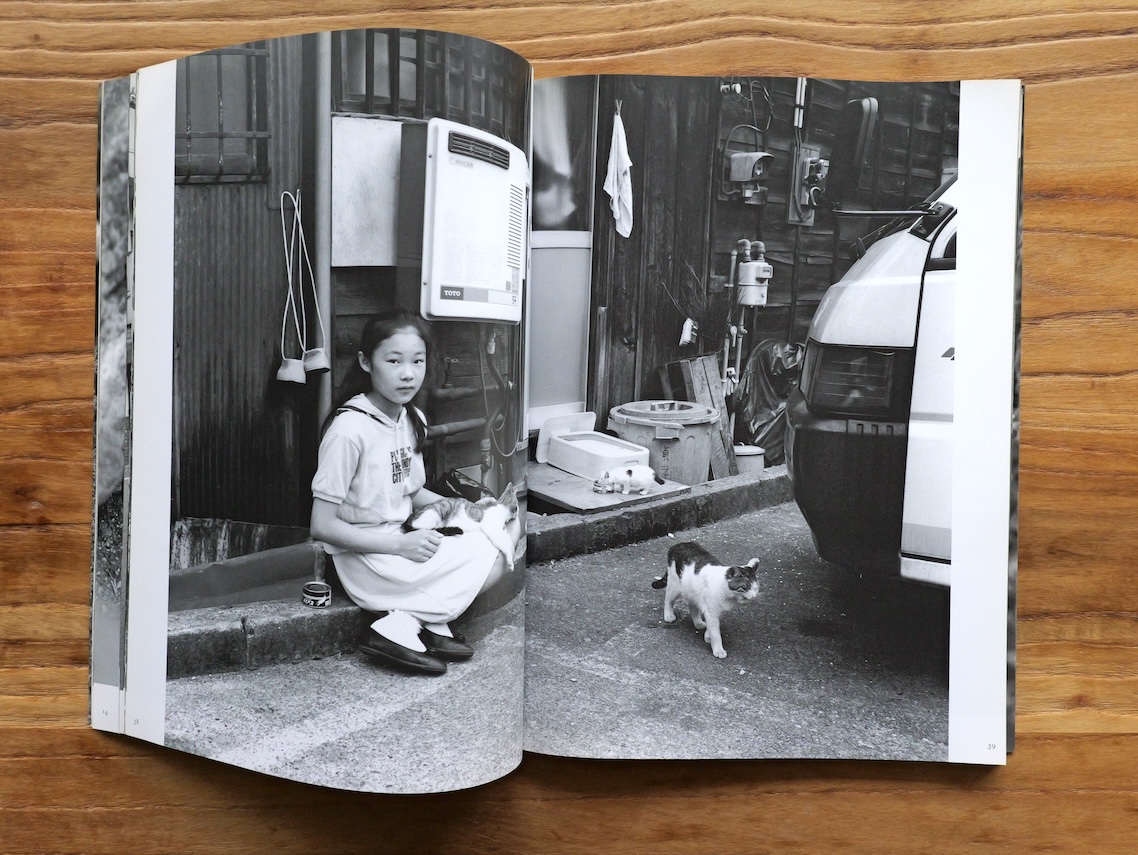
きっと、ネズミたちも同意しているでしょう…。ただ、発見するなら、やっぱりゴロゴロと喉を鳴らすトラ猫の方がうれしいですよね。
- Nobuyoshi Araki "Living Cats in Tokyo"
- Heibonsha
- 荒木経惟『東京猫町』
- 平凡社/1993年
- https://www.heibonsha.co.jp/book/b157681.html


PCT Membersは、Photo & Culture, Tokyoのウェブ会員制度です。
ご登録いただくと、最新の記事更新情報・ニュースをメールマガジンでお届け、また会員限定の読者プレゼントなども実施します。
今後はさらにサービスの拡充をはかり、より魅力的でお得な内容をご提供していく予定です。
 「Photo & Culture, Tokyo」最新の更新情報や、ニュースなどをお届けメールマガジンのお届け
「Photo & Culture, Tokyo」最新の更新情報や、ニュースなどをお届けメールマガジンのお届け 書籍、写真グッズなど会員限定の読者プレゼントを実施会員限定プレゼント
書籍、写真グッズなど会員限定の読者プレゼントを実施会員限定プレゼント